World Travel Awards Winner
Endorsed by ASTA
In Alliance with Regenera
Rated Excellent by Tripadvisor
Puno is the capital of the department of the same name, which is well known throughout the world as a result of its location on the shores of Lake Titicaca, the highest freshwater navigable lake in the world.
The city and lake are situated at 3827 m.a.s.l. and the inhabitants of the area have adapted well to the local geographical and climatic conditions. Their copper-colored skin withstands the cold nights and the strong, burning sun in the day. Fortunately, the lake produces a unique microclimate, with the sun heating the water during the day and this heat moderating the nighttime temperatures in the vicinity of the lake. This creates a small area where agriculture is viable. In addition, the lake also provides cheap and easily accessible food for local inhabitants in the form of fish.
Much of its territory is composed of an almost flat plain between 3850 and 4000 meters above sea level. This high plain and the lake are shared with Peru´s neighbor Bolivia, as is the language spoken by the ethnic Aymara inhabitants of the region.
In addition, the rivers that flow into Lake Titicaca also create a series of microclimates that make agriculture viable, and the main crops grown are potatoes, quinoa, barley, oats, and beans. These microclimates also make it possible to raise cattle in the area.
Puno is a mandatory point of passage, and even stay, for those who want to visit Lake Titicaca. The hotel infrastructure of the city is varied, with 5-star hotels.
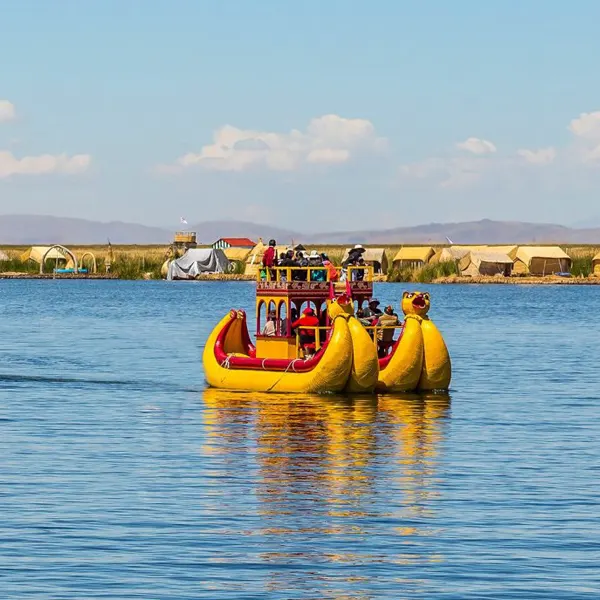
8 Days / 7 Nights
Lima, Cusco, Sacred Valley, Machu Picchu, Puno, Lake Titicaca
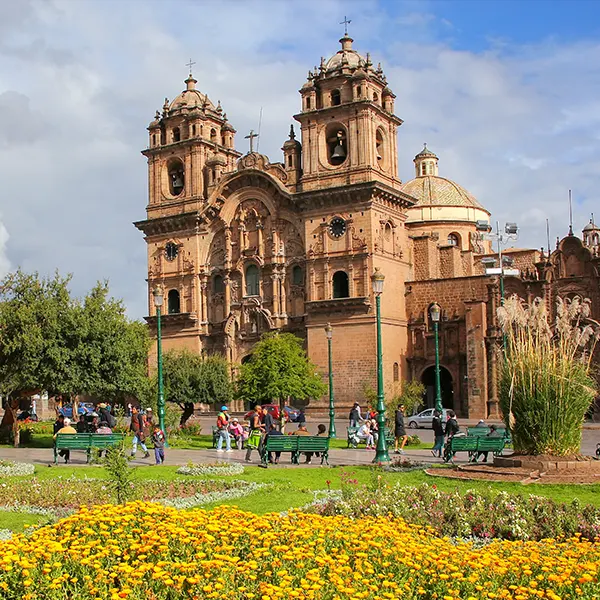
11 days / 10 nights
Lima, Puerto Maldonado, Cusco, Sacred Valley, Machu Picchu, Puno, Lake Titicaca
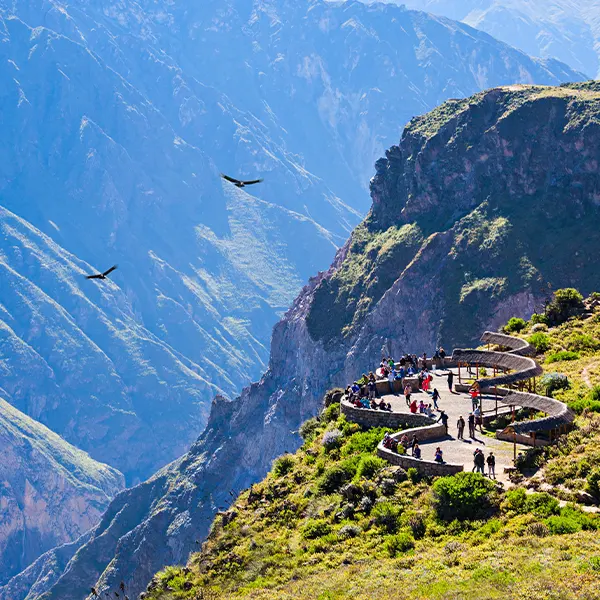
11 Days / 10 Nights
Lima, Arequipa, Colca Canyon, Puno, Lake Titicaca, Cusco, Sacred Valley, Machu Picchu
Puno is immensely rich in living traditions – in particular its modern interpretations of folk dances – as well as fascinating pre-Columbian history. The Pukara culture emerged here some three thousand years ago leaving behind stone pyramids and carved standing stones, contemporaneous with those of Chavín 1600 km further north. The better-known Tiahuanaco culture dominated the Titicaca basin between 800 and 1200 AD, leaving in its wake the temple complex of the same name just over the border in Bolivia, plus widespread cultural and religious influence. This early settlement was conquered by the Incas in the fifteenth century.
The first Spanish settlement at Puno Sprang up around a silver mine discovered by the infamous Salcedo brothers in 1657. The camp forged such a wild and violent reputation that the Lima viceroy moved in with soldiers to crush and finally execute the Salcedos before things got too out of hand. The Spanish were soon to discover the town´s wealth – both in terms of tribute-based agriculture and mineral exploitation based on a unique form of slave labour. In 1668 the viceroy made Puno the capital of the region, and from then on it became the main port of Lake Titicaca and an important town on the silver trail from Potosi in Bolivia. The arrival of the railway, late in the nineteenth century, brought another boost, but today it´s a relatively poor, rather grubby sort of town, by Peruvian standards, and a place that has suffered badly from droughts and poor water management over the years.
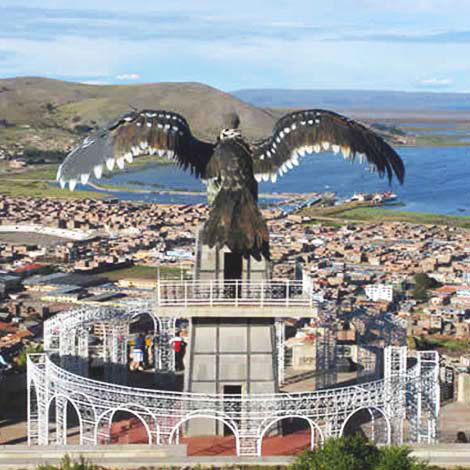
Puno is located on the shores of Lake Titicaca in the southernmost part of Peru. Puno is in the Altiplano part of Peru that extends to Bolivia. Further south from Puno the Andes Mountains create a stunning scene against the sky.
The town of Puno is located at 12500 feet or 3800 meters above sea level. Puno is only slightly higher than Cusco.
The risk of altitude sickness is a common complaint for people traveling to Puno. Symptoms include headache, fatigue, insomnia and no appetite. Before traveling to Peru, it is a good idea to ask your doctor to give you some medicine for the altitude. Remember to keep hydrated, do not eat too much and drink plenty of coca leaf tea.
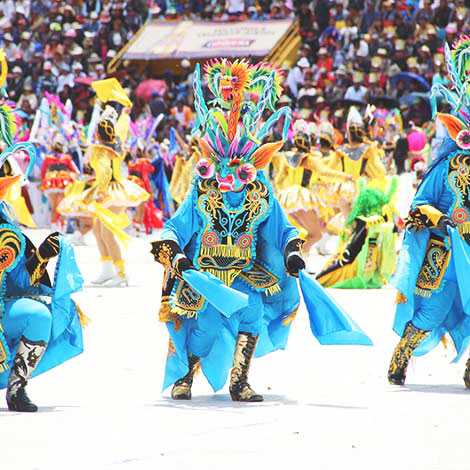
If you like festivals, you´ve come to the right place. Puno is the folkloric capital of Peru, boasting as many as 300 traditional dances and celebrating numerous fiestas throughout the year. Dazzling outfits can range from strikingly grotesque masks and animal costumes to glittering sequined uniforms. Accompanying music uses a host of instrumentation, from Spanish-influenced brass and string instruments to percussion and wind instruments that have changed little since Inca times.
LA VIRGEN DE LA CANDELARIA The festival in honor of Puno´s patrón virgin is celebrated over several days with masses and processions. It culminates with a thunderous street party on February 2, when thousands of splendidly attired dancers perform.
PUNO WEEK Centered on Puno Day (November 5), this festival is celebrated in style and marks the birth of the Inca Empire, when Manco Capac and Mama Ocllo first emerged from Lake Titicaca.
EPIPHANY Masked parades take to the streets for the festival better known as Día de los Reyes (Three Kings Day), when celebrants honor the magi who bestowed gifts on the baby Jesus. It takes place on January 6.
FIESTA SAN JUAN DE DIOS On March 8 a more demure religious procession honors St John of God, the patron saint of the sick.
FIESTA DE SANTIAGO The Feast of St James on July 25 is a big feast day on Isla Taquile, when dancing, music and general carousing lasts several days, and islanders make offerings to Pachamama (Mother Earth).
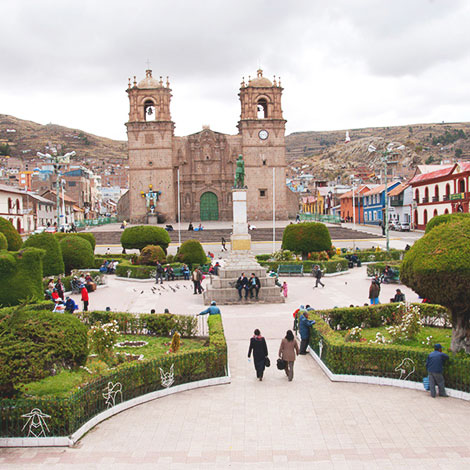
The seventeenth–century Catedral is surprisingly large, with an exquisite Baroque façade from 1657 and, unusually for Peru, a very simple and humble interior, in line with the local Aymaras´ austere attitude to religion.
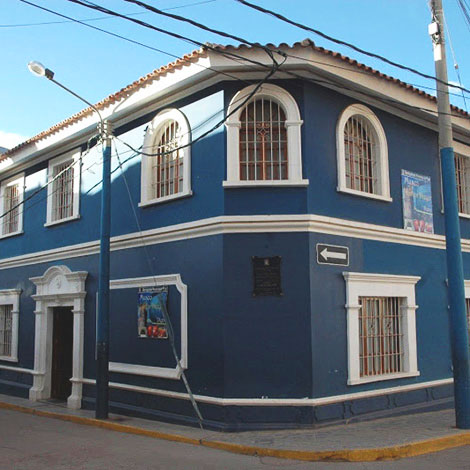
Opposite the Catedral´s north face, the Museo Municipal Dreyer contains a unique collection of archeological pieces, including ceramics, golden objects from Sillustani, some textiles, and stone sculptures, mostly removed from the region's chullpas.
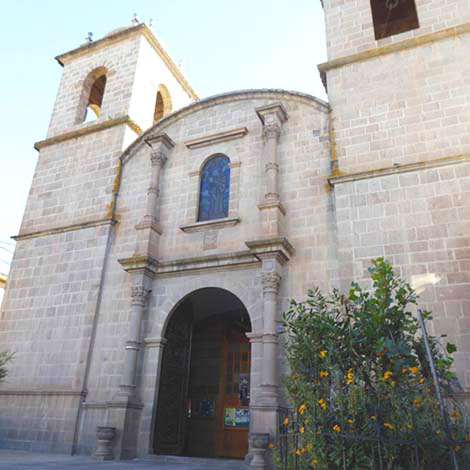
The Iglesia San Antonio, two blocks south of the plaza, is smaller and colorfully lit inside by ten stained-glass circular Windows. The church´s complex iconography, set into six wooden wall niches, is highly evocative of the region´s mix of Catholic and Indian beliefs.
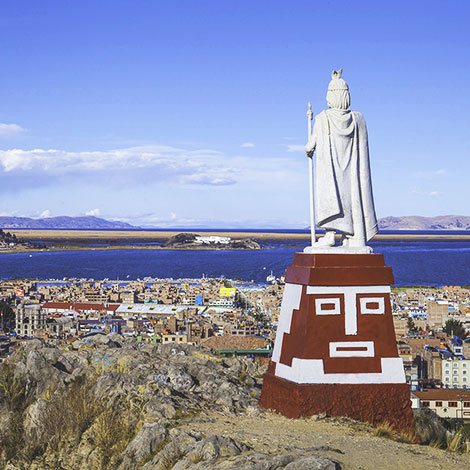
High up, overlooking the town and Plaza de Armas, the Huajsapata Park sits on a prominent hill, a short climb up Jirón Deustua, turning right into Jirón Llave, left up Jirón Bolognesi, the left again up the Pasaje Contique steps. Often crowded with cuddling couples and young children playing on the natural rockslides, Huajsapata offers stupendous views across the bustle of Puno to the serene blue of Titicaca and its unique skyline, while the pointing finger on the large white statue of Manco Capac reaches out towards the lake.
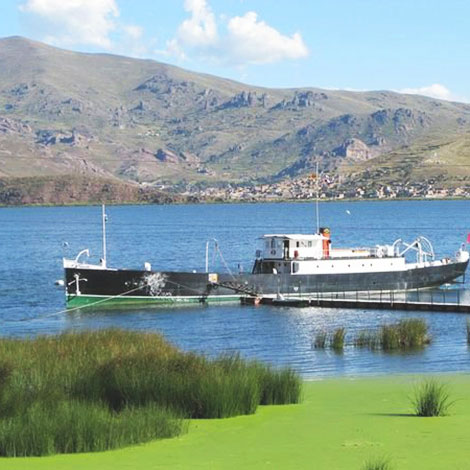
The nineteenth-century British-built steamship Yavari provides a fascinating insight into maritime life on Lake Titicaca over a hundred and fifty years ago and the military and entrepreneurial mindset of Peru in those days. Delivered by boat from England to Arica on the coast, it was designed by James Watt. From Arica it was brought 560 km by mule in over 1300 different pieces, having started life as a Peruvian Navy gunship complete with bullet-proof windows, but ending up delivering mail around Lake Titicaca. At times it has hard to use llama dung as fuel. The Yavari is in working order now. But needs $559,000 more work before it can be certified for passenger use.
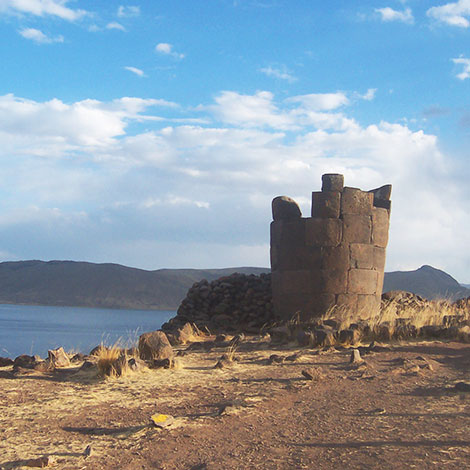
Standing on rolling hills on the Lago Umayo peninsula, the chullpas of Sillustani (admission S10; hour 8am-5pm) can be seen for kilometers against the desolate altiplano landscape.
The ancient Colla people who once dominated the area were a fearsome, Aymara-speaking ethnicity, later integrated into the southeastern part of the Inca empire. They buried their nobility in chullpas, which can be seen scattered widely around the region. The most impressive of these are at Sillustani, where the tallest reach a height of 12m. The cylindrical structures housed the remains of complete family groups, along with plenty of food and belongings for the journey into the next world.
Nowadays, nothing remains of the burials, but the chullpas are well preserved. The area is partially encircled by the sparling Lago Umayo (3890m), which is home to a wide variety of plants and Andean waterbirds, plus a small island with vicuñas (threatened, wild relatives of llamas).
Tours to Sillustani leave Puno at around 2:30pm daily. The round-trip takes about 31/2 hours and allows you about 11/2 hours at the ruins.. Take sunscreen and a hat. There is no shade to speak of.
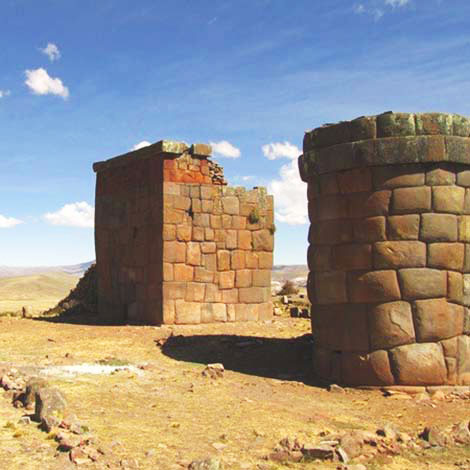
The dramatic site of Cutimbo (admission S6; 8am-5pm) has an extraordinary position atop a table-topped volcanic hill surrounded by a fertile plain. Its modest number of well-preserved chullpas, built by the Colla, Lupaca, and Inca cultures, come in both square and cylindrical shapes. Look closely and you´ll find several monkeys, pumas, and snakes carved into the structures.
A little more than 20km from Puno, this place receives few visitors, which can make it problematic for independent travelers, who have been assaulted here. Go in a group.
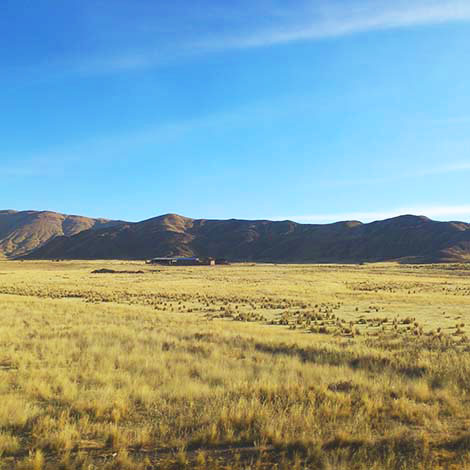
Ten kilometers out of Puno, on the lake´s southern shore, this rural community is spread across a gorgeous green valley that is home to a little–known ruin with superb views – a multilayered temple complex with breathtaking 360-degree vistas. It´s a great place for a hike.
To get there, leave the Panamericana at Ichu´s second exit (after the service station) and head inland past the house marked “Villa Lago 1960”. Continue on for 2 km, bearing left at the junction, aiming for the two small, terraced hills you can see on the left of the valley. After bearing left at a second junction (you´ll pass the school if you miss it), the road takes you between the two hills. Turn left again and head straight up the first one. Fifteen minutes of stiff climbing brings you to the hilltop complex.
This can be done as an easy half-day trip from Puno. Taxis from Puno can take you to the top of the hill and wait while you hike. Take plenty of water and food; there are no facilities.
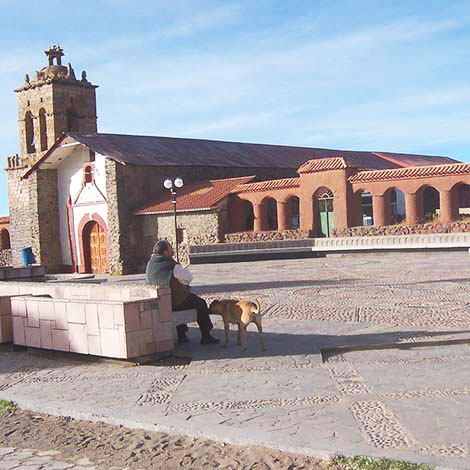
About 19 km south of Puno, this little village (population 1100) on Lake Titicaca´s south shore offers one outlandish attraction: the Templo de la Fertilidad (Inca Uyu; admission S5; hour 8 am-5 pm). Its dusty grounds are scattered with large stone phalluses, some up to 1.2m in length. Local guides tell entertaining stories about the carvings, including tales of maidens sitting atop the stony joysticks to increase their fertility.
Further uphill from the main road is the main plaza, which has two attractive colonial churches, Santo Domingo and Nuestra Señora de la Asunción. (ask around for the elusive caretakers if you want to get a glimpse inside).
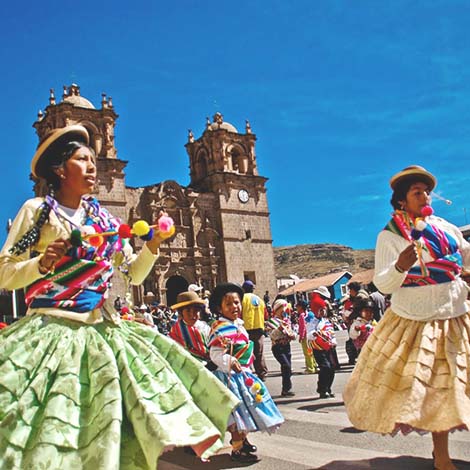
Rising from a wealth of artistic expression and traditions, Puno is known as the folklore capital of Peru. With many Aymara and Quechua celebration every year to showcase the traditions.
The Spanish arrived into the area in the 16th century and bought with them Catholicism, the local people embraced the traditions but also have never forgotten their roots and still today ask Pachamana to bless their crops and their harvest.
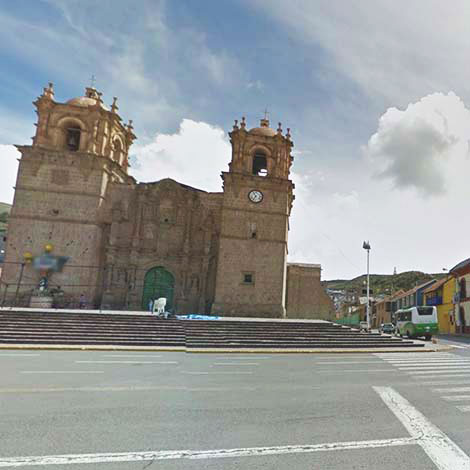
Calle Lima is the city´s pedestrian walkway that leads to the Plaza de Armes. The street is full of shops, bars and restaurants. You must visit the Cathedral and the Carlos Dreyer Museum.
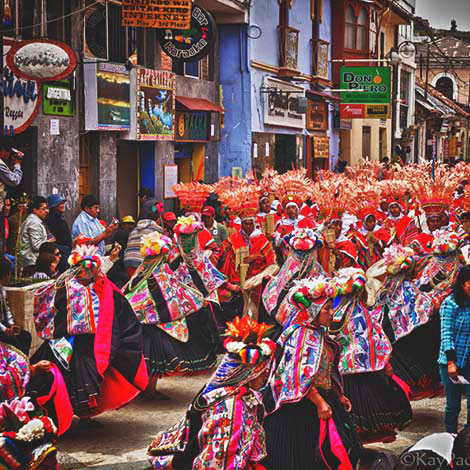
The Virgin of Candelaria is Peru´s largest festival. This is a two week celebration held in February every year and honors the city patron saint. Recently named by UNESCO as an Intangible Cultural Heritage practice, the festival sees the street abuzz with religious processions and dancing competions. Every year over 40000 dancers and musicians from all over Peru and the world participate in the parades. Come and experience the color of Candelaria.
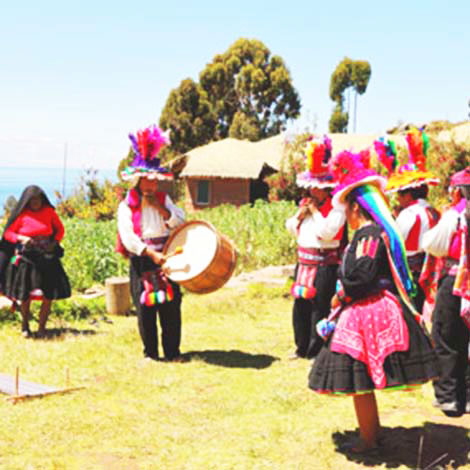
Each community of the Uros Islands have some activities and traditions to share with you. Although close to each other, Taquile Island and Amantani Island have remarkable differences and their own particular way of life. Most tours leave from Puno’s harbour in the morning and last for a full day. Tours include the Islands, interactions with local people and opportunities to purchase authentic, traditional handicrafts.
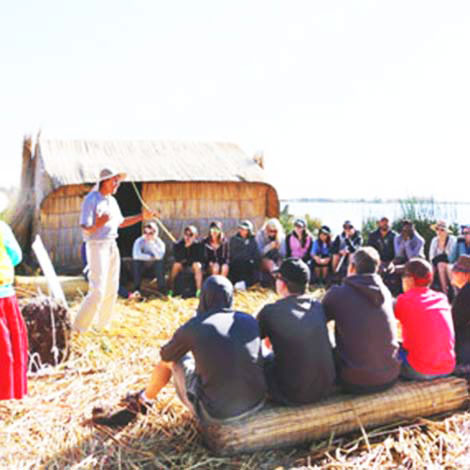
For a totally authentic experience stay on the floating Uros islands…
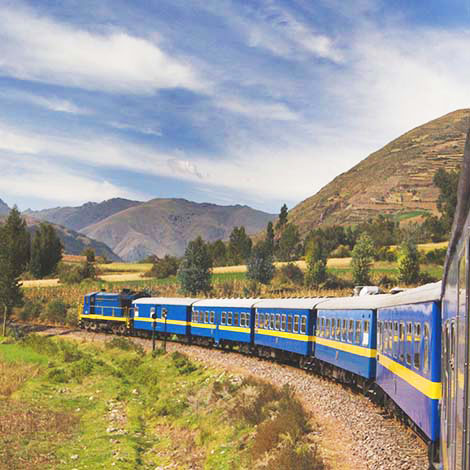
The Andean Explorer Train runs between Cusco and Puno every day. Travel this amazing and beautiful stretch of rail through high Andean plains, past magnificent mountain peaks, pass Andean towns, and see the locals passing their daily lives.
Puno's restaurant scene is fairly busy and revolves mainly around Jirón Lima, but bear in mind that places here shut relatively early - not much happens after 11 pm on a weekday. The food in Puno is generally nothing to write home about, but the local delicacies of trout and kingfish (pejerey) are worth trying and are available in most restaurants. The best local fare can be found in small traditional restaurants in the Hualje zone, en route to the Isla Estevez; here you'll find various picanterias, many with convivial atmospheres and goof views.
Jr. Lima 425. Offers pizzas and pastas, as well as alpaca and a range of wines, and a variety of vegetarian disher, main meals start at round S/. 18.
Jr Lima 517. The best restaurant in town, particularly for evening meals, serving excellent criolla dishes in an attractive traditional envirofiment with lace tablecloths. It is also something of a museum, with antiques everywhere, and is very popular with locals.
Jr. Lima 348. A groovy restaurant-bar in the heart of town, serving a wide range of inventive meals, including great alpaca steaks, lakefish, stir-fries, even curry; good-value set menus and breakfasts.
Av Simón Seta 401, Barrio Bellavista. Quite far from the center, but worth the trip for its wide range of quality local foods in a traditional setting; the barrio is a bit dodgy after dark, so ifs advisable to arrive, and depart, with friends and take a taxi.
Jr Moquegua 200. Open from breakfast till late, this place specializes in pizzas but also serves alpaca and trout among other delicades.
Jr. Lima 364. A favourite with travellers and relatively inexpensive, Don Piero has good breakfasts, a fine selection of cakes and a rack of magazines for customer browsing.
Jr Moquegua 201. A classic Puno restaurant, popular with locals for lunch and supper, with a good range of reasonably priced meals. Go upstairs for the best atmosphere.
Jr Moquegua 431. This restaurant specializes in broasted chicken meals (basically roast chicken and chips) in a well-preserved colonial mansion, where the poet Carlos Oquendo y Amat was born in 1905.
Jr Moquegua 326. A delightful bakery with freshly baked bread, cakes, pies and pasties. Also serves reasonable coffee, herb teas and cold drinks.
Pasaje Gran 172. Very nice ambience and varied cuisine, including pizzas, Chinese, local, novo andino and vegetarian. Good service.
Jr Lambayeque 141. Serves probably the best vegetarian food in town including salad, set lunches and yoghurt. The place is family run and very dean and the service is friendly.
The city's strong tradition as one of the major Andean folklore centers in South America means that you're almost certain to be exposed to at least one live band an evening. Musicians tend to visit the main restaurants in town most evenings from around 9pm, playing a few folk numbers in each, usually featuring music from the altiplano - drums, panpipes, flutes and occasional dancers. Nightlife centers around Jirón Lima, a pedestrian precinct where the locals, young and old alike, hang out, parading up and down past the hawkers setting woolen sweaters, craft goods, cigarettes and sweets. Most bars are open Monday to Friday 8 to 11 pm or midnight, but keep going until 2am at the weekends.
Jr Tarapaca 330-a. Well-stocked bar with good service, ambience and decor, and a variable music policy according to clientele; it's a large friendly space which rarely gets too crowded.
Jr Lima 355, 2nd floor. Ekekos offers snacks, drinks, cable TV, books and games; also shows films and favors a soundtrack of rock, salsa, reggae, trance and techno musi
Jr Lima 501. A smart pizzeria and bar, busy in the evenings and a good meeting place; also serves steaks, Including alpaca
Lima 349. A warm, genial environment, crowded with travellers on Puno's cold, dark evenings. Serves delicious mulled wines and often has good music.
Jr Lima 355. A decent, trendy bar, popular with young locals and travellers alike; also serves decent breakfasts and plays rock and reggae music.
Block 1 of Arequipa. Hosts folklore music, dance and other cultural events. For details of what's on, check at the tourist information office or the box office.
Artesanía Jirón Lima is the best street for craft goods; try the Asociación de Artesanos "La cholita", Jr Lima 550,2nd Floor.
Ceramics For original Andean handmade ceramics and to see artists at work, there's the Cerámica Titikaka, Jr Tarapaca 341.
Musical Instruments The unnamed shop at Jr Arbulu 231 sells the most traditional Andean musical instruments (though fairly similar ones can be bought cheaply in the street market, on Av Los Incas).